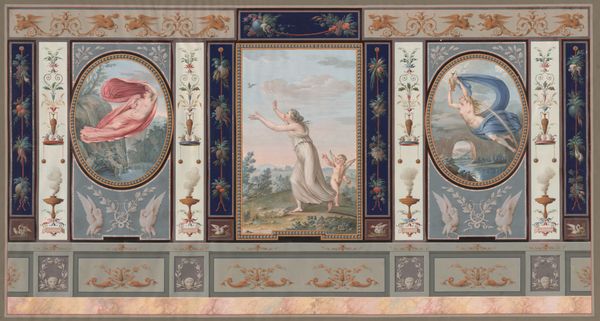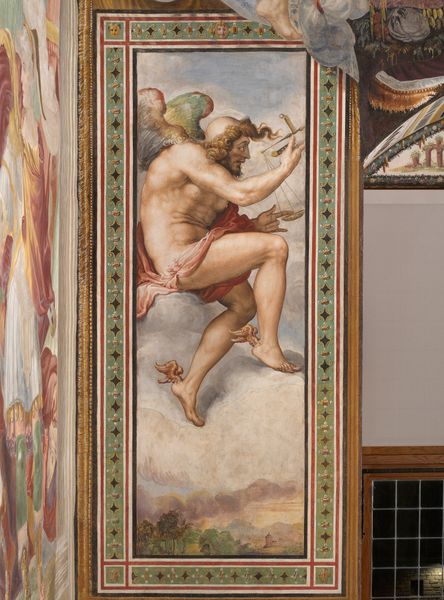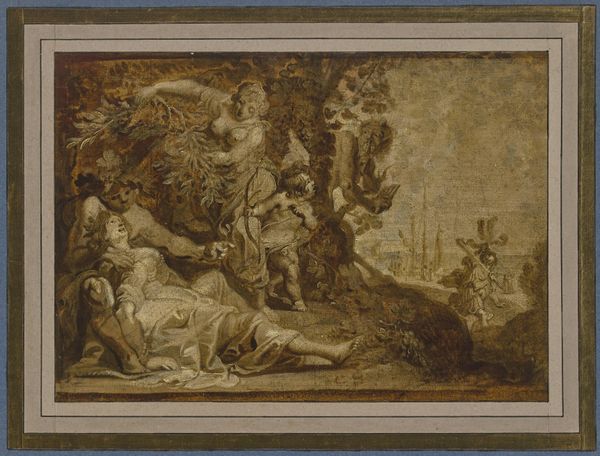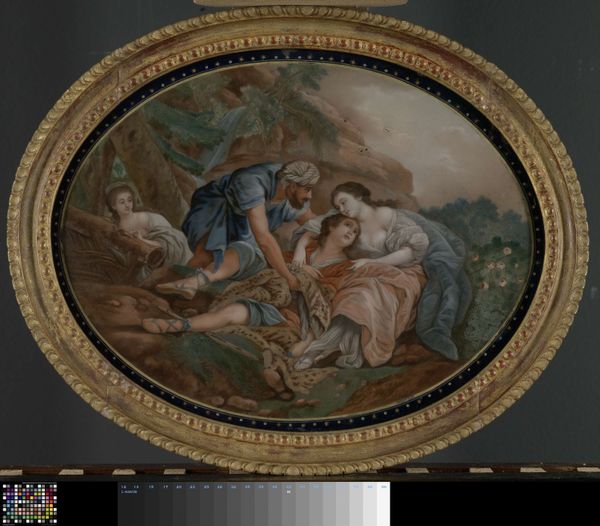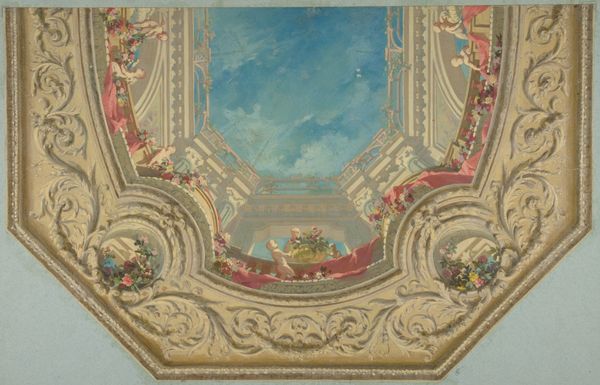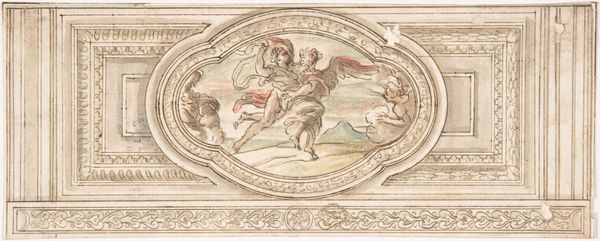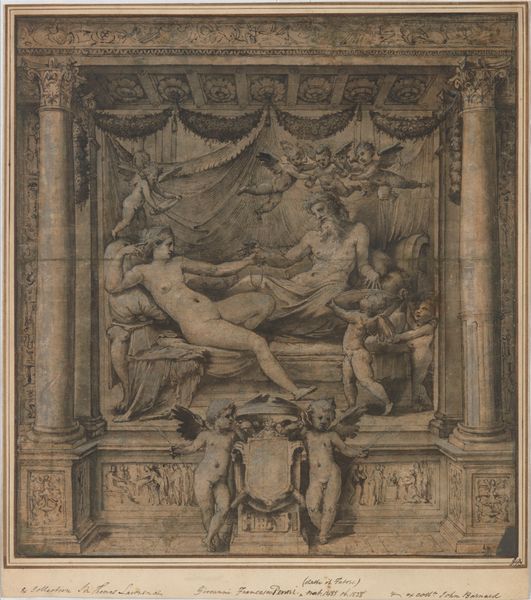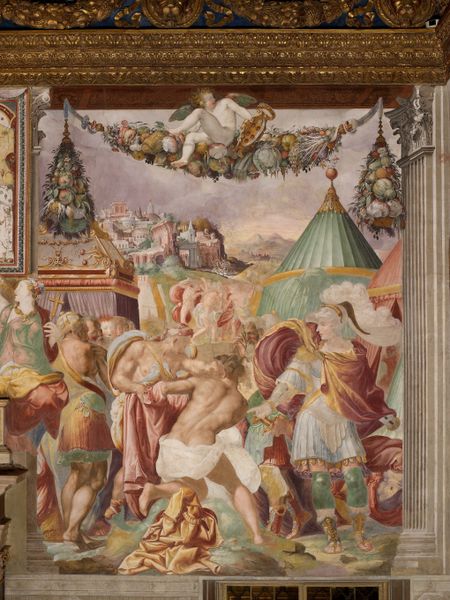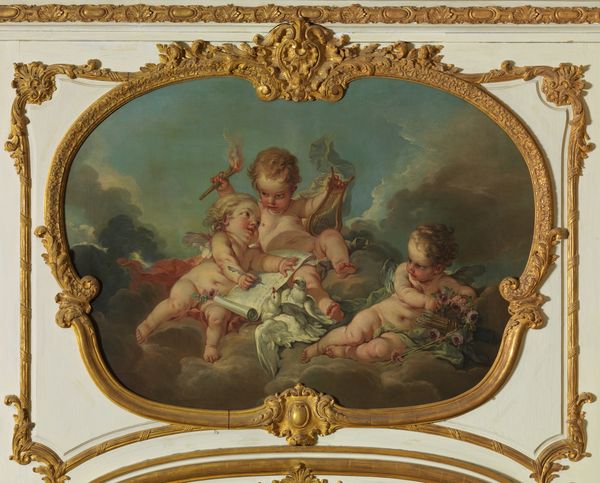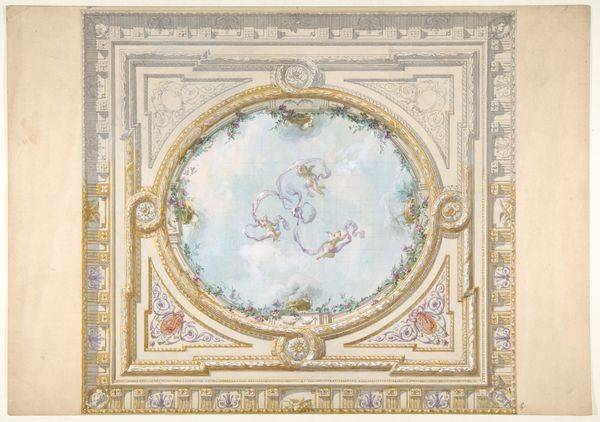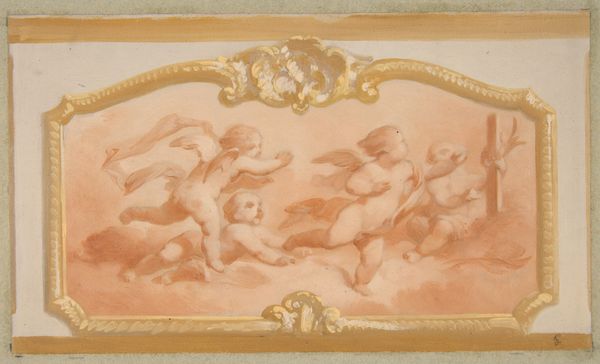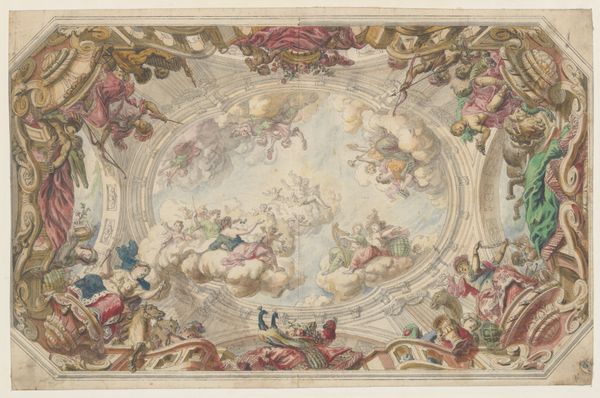
drawing, tempera, painting, fresco, watercolor
#
portrait
#
drawing
#
neoclacissism
#
allegory
#
tempera
#
painting
#
landscape
#
classical-realism
#
figuration
#
fresco
#
traditional architecture
#
watercolor
#
tile art
#
history-painting
#
academic-art
Dimensions: sheet: 31.7 × 45.6 cm (12 1/2 × 17 15/16 in.)
Copyright: National Gallery of Art: CC0 1.0
Editor: This is *Elaborate Wall Decorations with Venus and Adonis*, dating to around 1800, by Tommaso Bigatti. Looking at the frescos, I’m struck by their framing, the balanced color palette, and how these distinct scenes form one large ornamental design. What does this scene suggest to you? Curator: The arrangement speaks to the ambitions of Neoclassicism, a style deeply invested in civic virtue and order. Frescoes like this weren't just decoration; they aimed to cultivate refined taste and project the owner's cultivated knowledge of classical history. How do you see these images functioning within a specific social context? Editor: Hmm, I guess they visually showcase status, reflecting wealth and education during the period… the themes are not everyday events. Curator: Precisely. These mythological narratives – Venus, Adonis, and other figures–served as moral exemplars or cautionary tales. Think about the role of the decorative arts in reinforcing power structures and social hierarchies. Did everyone have access to such imagery and understand its references? Editor: No, probably limited to upper-class circles. So, art reinforces cultural knowledge and social class, not just pure aesthetic pleasure? Curator: Exactly! Furthermore, consider where these wall decorations would likely have been located. Grand homes, salons… places where the wealthy would gather to discuss politics, philosophy, and art itself. So, the fresco creates the cultural frame. How might that inform the reception of art by, say, ordinary people who saw or learned of this display? Editor: It really underscores the art's function as a status symbol. I used to just think of "neoclassical" as columns and order! Curator: Yes, its power lay just as much in its public, communicative role. By looking at history, one appreciates not only its technique and themes but also how it operates as a cultural force. It also becomes clear the exclusion that those choices create and support.
Comments
No comments
Be the first to comment and join the conversation on the ultimate creative platform.
